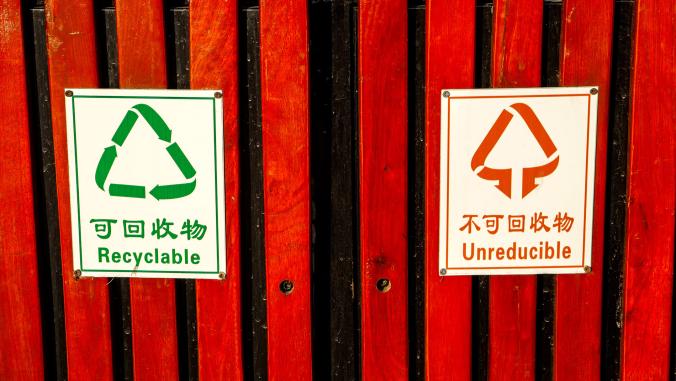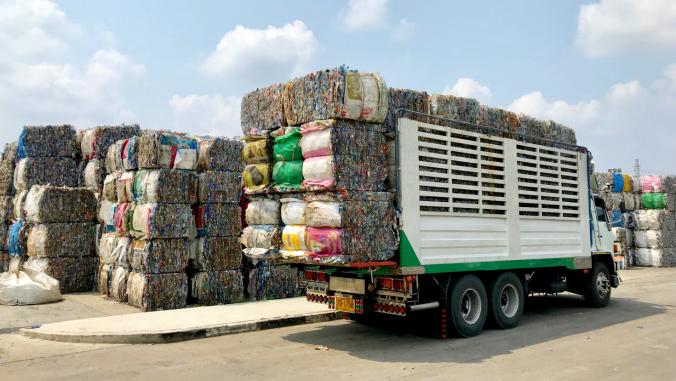Plastic, China and how to drive your brand into the circular economy
Will the oceans have more plastic than fish by 2050? Not if we can stop it.

As our seafood gets overfished, and with a growing global population that consumes many more products and plastic, we are facing a growing waste challenge which may lead us to having an ocean that has more plastic than fish by 2050. Part of me believes this tragic result will come much earlier, due to the vast underestimation of the amount of illegal fishing that is going on in the world today and the lack of global capacity for recycling and waste management.
The other part of me believes that we will never reach this outcome, because we are moving into an era of greater corporate and community enlightenment which will propel technological solutions into existence in a way that we have not seen in the past. This complements the fact that we are finally starting to understand the vast importance of the ocean and need for proper fisheries management.

In countries that don’t have the full capacity to handle humanity’s consumption, it is estimated that over 40 percent of the world’s trash in the world today is burned, most of which is in open-pit scenarios, where toxins then get into the air and back into our environment.
Challenging times
So let’s fast-forward to a slowing economy in China, but one that is rapidly modernizing its methods of production, building new sectors that are leading on innovation, and even becoming robotic. Its resources are stretched, but oil prices are low and are likely to stay that way for some time due to the decentralized oil pricing that fracking has brought to the equation, as well as the economies of scale that are unfolding in the space of renewables, batteries, electric cars and the movement of smart money away from carbon-focused entities.
This also poses a challenge for the recovery and re-use of plastic, versus cheaper virgin material which follows low oil prices, and for those hoping to reduce the waste impact.
Some of China’s provinces and companies are now moving into business operations that foster the growth of the circular economy.
Some of China’s provinces and companies, however, are moving into business operations that foster the growth of the circular economy, which means designing products that can be taken apart, re-blended or recycled so that waste is not an end result. This is complemented by the fact that the China Petroleum and Chemical Industry Federation (CPCIF) recently signed on to the World Plastics Council, which also has a goal of reducing plastic waste in the environment. The issue is that many companies do not yet know how to obtain good quality recycled content for their supply chains, nor do the municipalities necessarily have the systems in place to provide it.
Now enter Western buyers into this equation — the brands from afar that have moved much of their sourcing to China and Asia, and which also are often trying to sell to these growing populations. These new countries and markets, however, have not had the capacity to recycle or handle the waste that is created along the way. Even Hong Kong, one of the wealthiest cities in the world, has not figured out how to efficiently recover its resources.
A win-win situation can be created, however, as Western brands begin to face greater challenges and demands of sustainability in their own markets, and are wanting to move up the value chain of brand reputation while giving back to the communities and populations they serve.
Enter enlightened buyers
Enlightened buyers can make an enormous impact in the world today, because they can cater to the demands, regulations and desires of their home markets. They can do this while greatly benefiting their sourcing countries if they start asking for materials and products that fit within the circular economy.
An increasing number of suppliers in Asia and elsewhere want to be at the cutting edge of technology, recycled content and material management, but the enlightened buyers from abroad really can expedite the tipping point for the circular economy.
The supply of recycled plastic is there, but demand needs to be stepped up a notch or 10, and this is where the enlightened buyers can make a big impact.
Their demand for high percentages of recycled content, for example, coupled with economies of scale for resource recovery, would mean that the circular economy can kick into gear, creating jobs, reducing waste, improving brand value and reputation and helping to stop the flow of material that reaches our waters, which today is a high percentage of plastic.
The supply is there, but demand needs to be stepped up a notch or 10, and this is where the enlightened buyers can make a big impact for themselves, the communities they serve and in the nations they source from. If this can happen, we have a much greater chance of always having more fish in the ocean than plastic.
On this topic, the fifth annual Plasticity Forum will be April 27-28 in Shanghai, focusing on the future of plastic and where the leaders are going with design, innovation, materials, recycling and solutions for a world without the waste footprint.





